Manifesta 10 ½
Thurs, 25 September 2014. 16:00-18:00
The Winter Palace, The Hermitage
“MANIFESTA 10 ½. A Guided Tour of an Imaginary Exhibition. Envisages an alternative Manifesta that circumvents the particular set of institutional and political restrictions that have characterised the Biennial’s realisation. The final MANIFESTA 10 exhibition had a slightly different result from the originally intended one due to a number of obstacles on both geopolitical and quotidian scales. With our project we go back to the initial idea of an exhibition that directly confronts the Russian imperial past, as well as its current echoes within the Tsar’s former Palace.
MANIFESTA 10 ½. A Guided Tour of an Imaginary Exhibition will consist of several invisible interventions throughout selected rooms in the Winter Palace, the largest building in the entire museum complex of the Hermitage and the venue in which Manifesta has responded to the historical collection as part of this year’s Biennial.”
The project is made by the participants of CuratorLab who have each have responded to the history, objects and atmosphere of one chosen room by imagining art works, objects and ideas within these spaces. The outcome will be a guided tour through the actual rooms of the Winter Palace with the virtual propositions for a show that seeks to engage the audience in a dialogue.
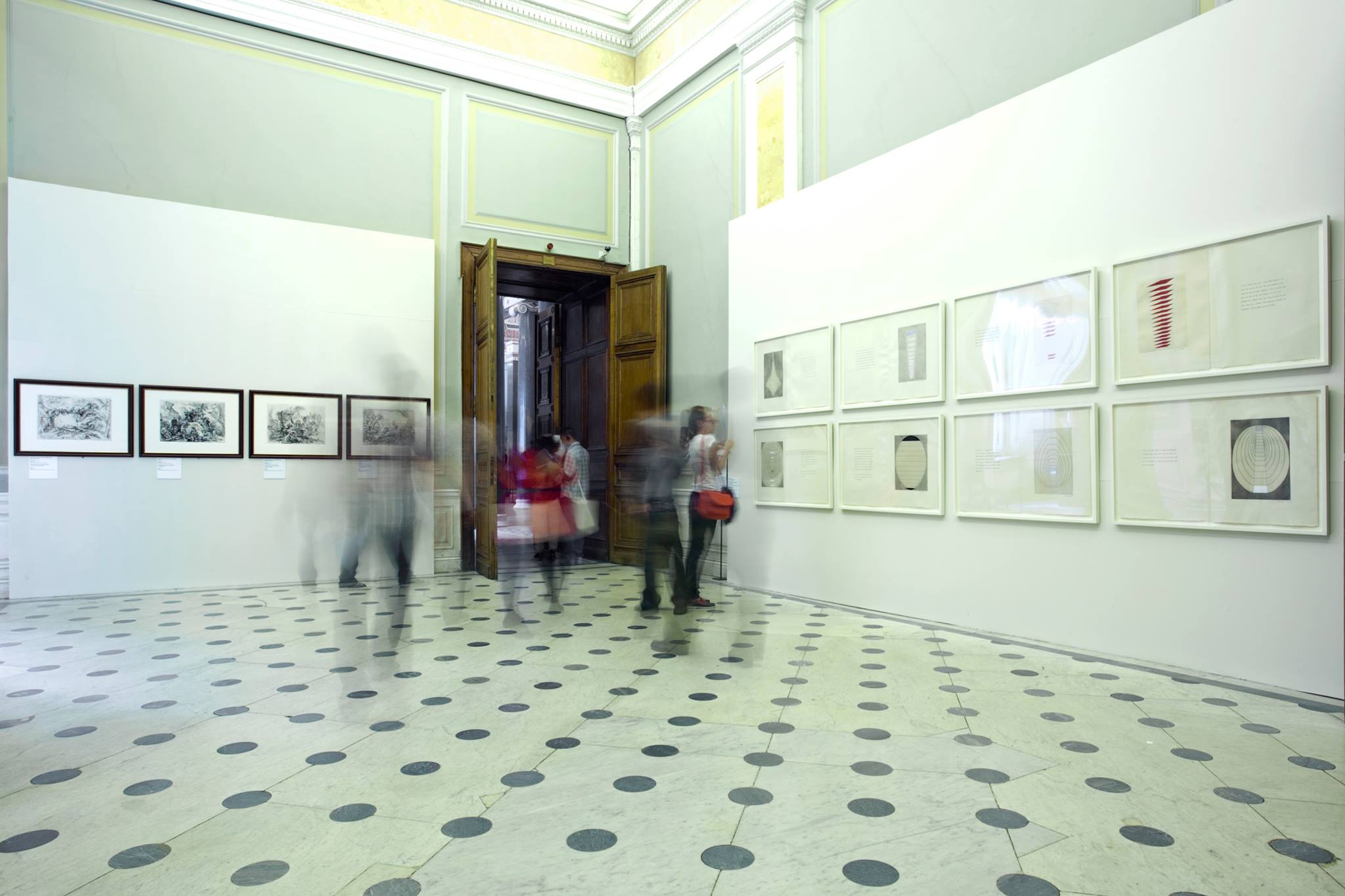
MANIFESTA 10, zdj. Egor Rogalev
The Peacock Clock
“In classical science the emphasis was on time-independent laws . Once the particular state of a system has been measured, the reversible laws of classical science are supposed to determine its future, just as they had determined its past. It is natural that this quest for an eternal truth behind changing phenomena aroused enthusiasm. But it also came as a shock that nature described in this way was in fact debased : by the very success of science, nature was shown to be an automaton, a robot.”
Order out of Chaos, Ilya Prigonine & Isabelle Stengers
Perhaps the days are not far off when the conquered phantoms of three-dimensional space, of the illusion of time formed like drops, and of a timid causality . . . will be revealed to everyone for what they have been all along – nothing but the annoying bars of a cell in which the creative human spirit has been imprisoned.
Mikhail Maitushin
The peacock clock appears in Eisenstein’s October during the storming of the Winter Palace where it symbolizes the inevitable downfall of the provisional government. The bird both exposes and represents the vanity of its leader who refuses to realize what the Bolsheviks, who are about to repossess the Tsar’s splendid wealth, let him know with a note: “time is up.” As a tourist guide boat told us during our visit to St. Petersburg, anybody can now visit the palace at anytime, and in plain clothes too. Every Wednesday afternoon at six, all the rooms of the always crowded palace are emtied by a tide of people rushing to see the automaton peacock perform. The bird is watched and recorded through digital notepads while, assisted by a man who works there, it shows off its biomechanical imitations of organic movement. The scene is a reminder that Eisenstein’s image of a history inevitably fullfilling its destiny fits easily into the scheme of westernization and neoliberal policies that present communism as an exception, a story of temporary de-railment, construing Putin as direct heir to the Tsar. Everybody is the owner of this decadent animal of luxury, but only in so far as all its parts and springs are gathered together in the hands of the sovereign, where it must remain if it is to work according to its destined function. For the common riches not to break down into chaos, freedom is played by an audience overseen by babushka security.
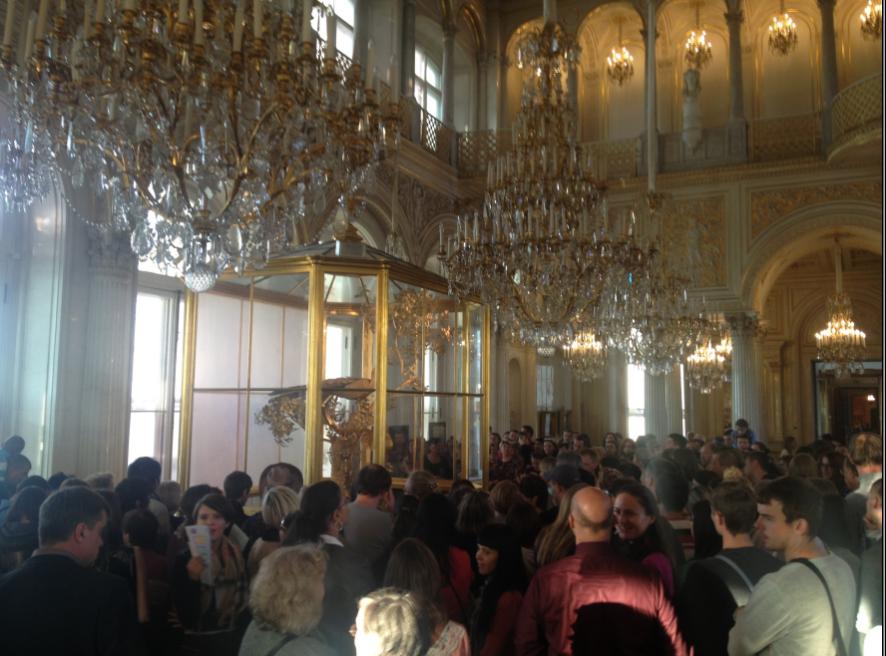
The Peacock was chosen as motif for the clock as a symbol of the cosmos. Yet while for astronomy the revolutions of planets guranteed regularity and predictability, revolution on earth’s scale meant the upheaveal of terrestrial order. Since the historical inevitability of communism can no longer be assumed, as it was by Eisenstein, perhaps communist time is instead folded into material complexity of lived experience that clockmaking could not capture. Such a model is better provided by Vertov’s Man with Movie Camera, where barbers famously have their scissors interspliced with images of the film’s editing process, so that their reproductive actions are animated by a omnipresent creative and connective potential.
The clockmaking technique for capturing organic movements into repetitious activity was later used to integrate diverse practices within factories, prefiguring not least the biomechanical engineering that was being appropriated by Soviet science and industry at the time of Vertov’s film. Meanwhile, Man With Movie Camera shows the miraculous root of likeness by way of self-moving matter and the soul of things. Among other things, Vertov is fascinated with fruits that pile themselves and a tripod that assembles itself. These animations may be said to present the peacock at the level of its mimetic function, to combine the craft of clockmaking with luxuorious appearance. The peacock contains both technique and spectacle, that is, one the one hand a defined way of doing applied to a certain material that “contemporary” or western art supposedly transgresses through postmedia practices, and on the other the inexplicably dense visuality of multiple relations and determinations critical art practice seeks to unravel.

Birds in the Hermeitage’s ethnographic collection
By folding cosmic time into the different speeds, trajectories, scales, saturations, directions, and sensibilia of earthly existences, the peacock combines prosaic technique with fantastical expressions. Taken this way, the bird suspends the direct correlation between a way of doing and the action’s performer, between a technique and what results, extending a surface where the different terrestrial registers come in contact to produce unexpected formations. In such a version, mimesis deals little with copy and reproduction through semblances of order. It rather animalizes Diamat, the “orthodox” marxism of the Stalin period that regarded consciousness as a mere reflection of matter, a cerebral neurodynamic process that follows nature’s immutable mechanisms.
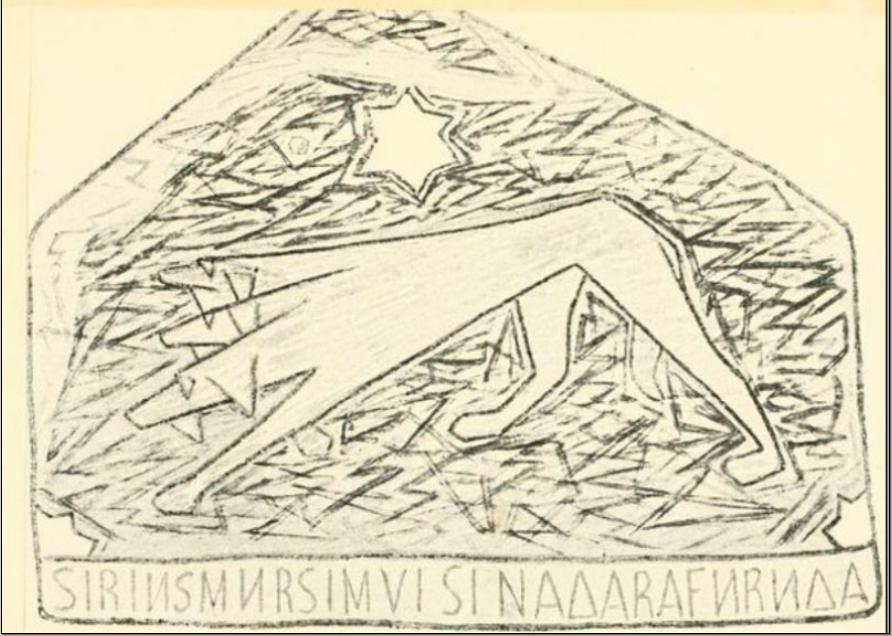
Nicolai Kulbin
The Soviet psycologist and “creative marxist” E.V. Ilyenkov referred to the regular movement of the stars to explain how the ideal, or spirit and thought, existed objectively and were not the exclusive properties of the human mind. Ilyenkov’s main agenda, however, was to introduce material activity as both an idealization of matter and, once that was done, a materilization of the ideal. Yet although the ideal can reside in natural bodies, material people and things have a roughness that reject to conform with it. The ideal never expresses identity but only processes of change and metamorphic relationships as different modalities of existence incorporate and act on each other. If Illyenkov’s theories locate thinking, knowing and seeing within social de- and reformations of the body, this can arguably be seen in Claudia Rößger drawings on astronomy paper, were cosmic forces are extending in bodies, multiplying and separating the organs of iconic and folkloric figures, making little distinction between animal costumes and animals, biological mutations and the movements of human activity.

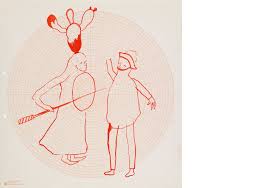
The accident of ‘The Institute’
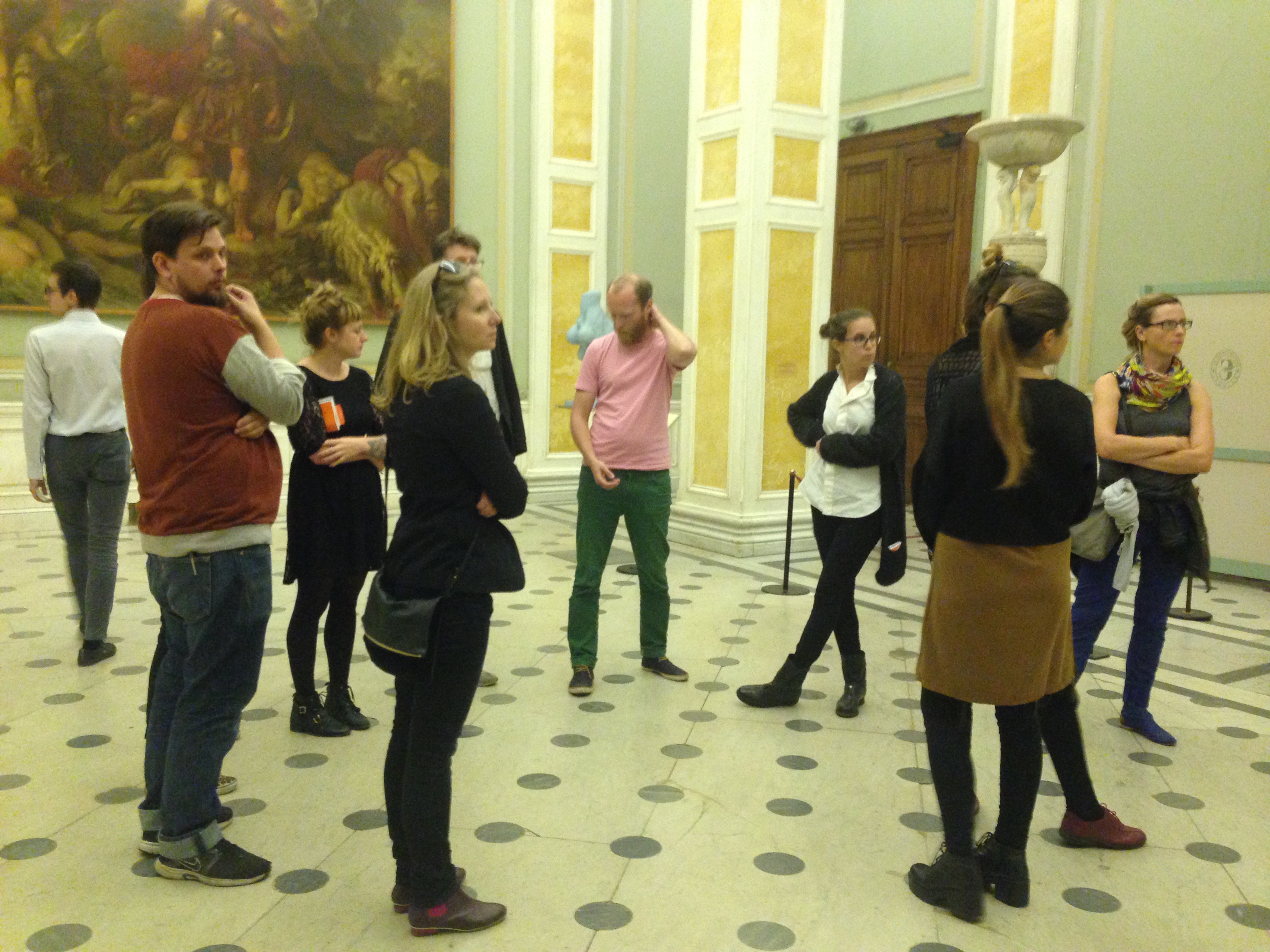
During our visit in St Petersburg, we were given a personal tour of Manifesta at the Winter Palace by curator and art historian Sergey Fofanov. After an extensive 3 hour tour, the last artwork to engage with was ’The Institute’ by Louis Bourgeois. To our surprise there was no work in sight due an unfortunate and clumsy accident.
Sergey explains how a Japanese tourist had accidentally backed into the sculpture while taking a photo of a rather large image opposite to it.
Questions regarding security, access and insurance were asked and we had a short discussion about the placement of the piece, the damage and repair.
I became fascinated by the Japanese tourist and his misfortunate accident. Something that could of happened to the best of us. I started thinking about the value of the art piece in relation to absurdity of the accident, but mainly to the tourist’s life. His actions and his own being have now become a part of the artwork itself. A truth which might be forgotten, but regardless the happening remains. I’m interested in the storytelling around this ’spectacle’, how it is told and how/if the story becomes a part of the artwork.
In this room I want to implement a site specific sound walk by Janet Cardiff and George Bures Miller that mediates this story, perhaps leaving us to question and think about the authority and time aspect of ’The Institute’ and all other works on display at the Winter Palace.

Louise Bourgeois,
The Institute, 2002.
Silver, 30.5 x 70.5 x 46.4 cm.
Collection The Easton Foundation.
Photo: Christopher Burke, © The Easton Foundation
© Louise Bourgeois, The Institute, c/o Pictoright Amsterdam 2014
Josefin Vargö
Queerfest at the Winter Palace: The Art of Being Yourself?

(Image copyright Queerfest Russia)
Our trip to Manifesta coincided with the 6th annual festival celebrating queer identity, Queerfest. For this year’s festival they decided to reevaluate their activity and their position in their Russian context, and look back to their roots and their original slogan: The Art of Being Yourself.
Aware of the increasingly alarming political oppression in contemporary Russia under Putin, I was drawn in by this positive stance and very open social media activity, and decided to attend as many of the events as I could. On 19th September this statement appeared on their website:
“QueerFest”, the queer pride event of Russia, opened today in St. Petersburg with a bang. Over 160 people made it, despite the last minute change of venues, attacks by provocateurs, and insults by the usual guest – Vitaly Milonov.
Yesterday, the organisers learned of the planned actions to foil the event by infamous homophobic activists, some of them, such as Enteo and the crew, coming especially for the festival from Moscow.
The police and the ombudsman for human rights of St. Petersburg were alerted.
Today started with a call from the main venue, receiving threats. 1,5 hours before the festival was scheduled to open, the owner of the building (same building that hosts “Manifesta 10″ biennale headquarters) informed us through his representative that our contract was annulled. Reason given “compromised integrity of the arch over the entrance into the building, which may result in its collapse”. Needless to say, this public threat did not impede all other events in the building to proceed as planned.
Volunteers of the festival moved the exhibition and equipment to a new venue in under 1 hour.
The ceremony was a success. While QueerFest’s security barricaded the door from Vitaly Milonov and his friends, who proceeded to insult and push guests, representatives of human rights organisations and European and the US diplomatic missions in St. Petersburg spoke of the importance of respect for human rights and non-violence.
About 20 hooligans sprayed guests with green substance and some sort of stinky gas. At one point, two foreign guests were being pulled into the venue by the security while being pulled out by their feet by the perpetrators.
The police, who carried themselves professionally, were taking numerous statements by the victims, while St. Petersburg ombudsman urged more people to document violations.
Unfortunately, the second venue also ceded to pressures, and most events are now homeless. But the organizers remain optimistic.
“We feel exhausted and exhilarated. Thanks to the work of 40 volunteers, partners, and random kindness by strangers and by passers, our event was a success. People – their rights – but also their light and kindness, is what our festival is all about. And there are more of them around us every day. That is why we will prevail”, says Polina Andrianova, one of the festival organizers.
The organisers thank all partners, friends, volunteers, colleagues, and participants for today’s support.
I arranged a meeting with Queerfest and arrived in their office, only to be told that they had been forced to suspend all public activity, meaning that the workshops and talks organised would either be cancelled, or be open to a handful of select people known to the organisation. With this is mind, and with an invitation from Joanna Warsza to introduce an imaginary piece of artwork to the Winter Palace, I felt there was more urgency to create a platform for a short public presentation by Queerfest to talk about what was happening to them.
On 25th September, two representatives from the organisation spoke (in a mixture of english and russian) to anyone who was interested in listening to them in the Winter Palace. They spoke of their struggles over the past days, with local authorities, protestors, and most worrying of all, the police force in St Petersburg.
We continue to be in contact, and I hope to upload an interview with one of the directors, Ruslan Savolainen, to speak about the events that happened after we left Russia, and their strategies for the future of Queerfest.


Civilisation
Support for Vladimir Putin at the presidential polls was higher in rural areas and small towns than in the cities. It stood at 70 percent in the 2013. The Russian countryside is traditionally perceived as conservative, less-educated and strongly connected to the local Orthodox Church.However there is also another kind of tradition linked to the Russian countryside: one of revolts, rebellions, religious heresies and social unrests. Peasants were the most oppressed class in Russia for most of the middle ages till the modern times, which led to numerous revolts among which the most famous is the Pugachev’s rebellion in the XVIII century. In 1915 Kasimir Malevich and Vladimir Mayakovsky collaborated on a set of posters based on the colourful folk imagery of the lubok, or traditional illustrated broadsheet. Malevich shows peasant men and women sweeping out the invading soldiers with pitchforks:
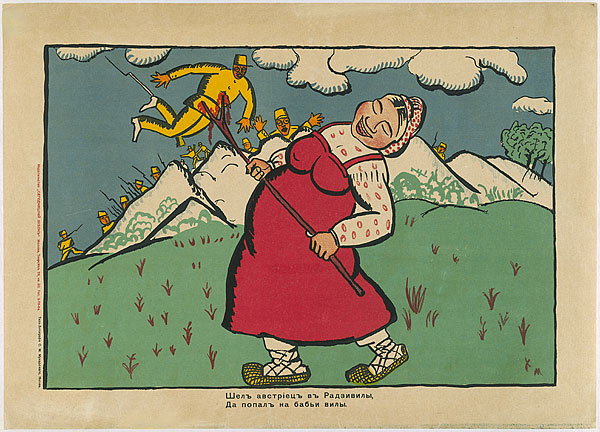
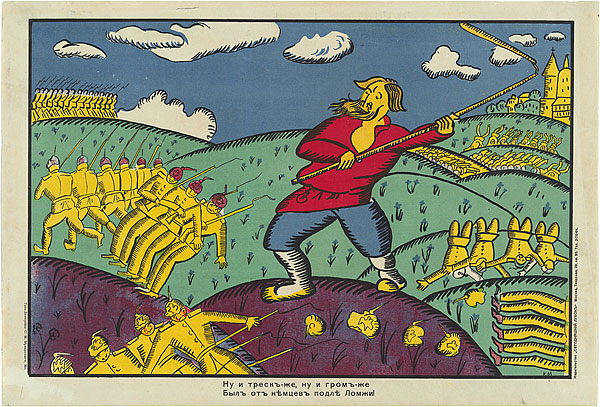
Today this rural tradition needs to be remembered more than ever. Bai Yilou’s installation entitled “Civilisation” is a reminder of the fact that a great part of contemporary Russia has a very different past than the one represented by the imperial ambitions of politicians. Bai’s Civilization is a haunting monument criticizing imperious power as a corrupted vision built on labourers’ toil. Made from terracotta, classical busts pose as emperors, pierced through and defined by agricultural tools, a life force and bane. The artist introduces agricultural tools as weaponry, piercing and protecting itself from the busts of western classics. In this one unforgettable image, he distils the eternal hatred of poor for rich, ruled for ruler, and ignorant for educated that has fuelled all revolutions from Spartacus to Mao:
Bai Yilou’s installation will be presented in the Jupiter Hall of the Winter Palace:
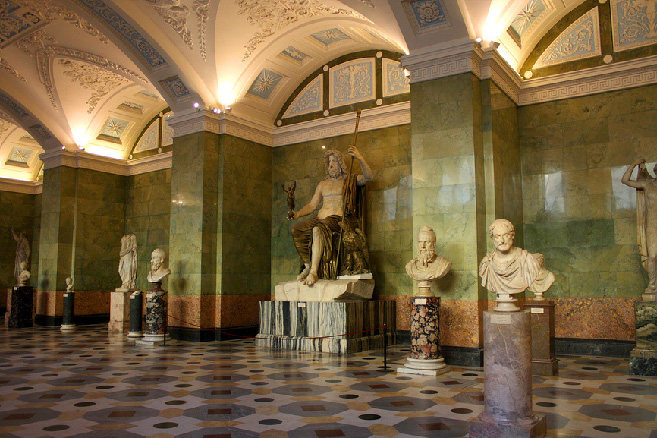
Dorota Michalska
A Tribute to Mierle Laderman Ukeles’ Manifesto: I do maintanence art 1 hour per day


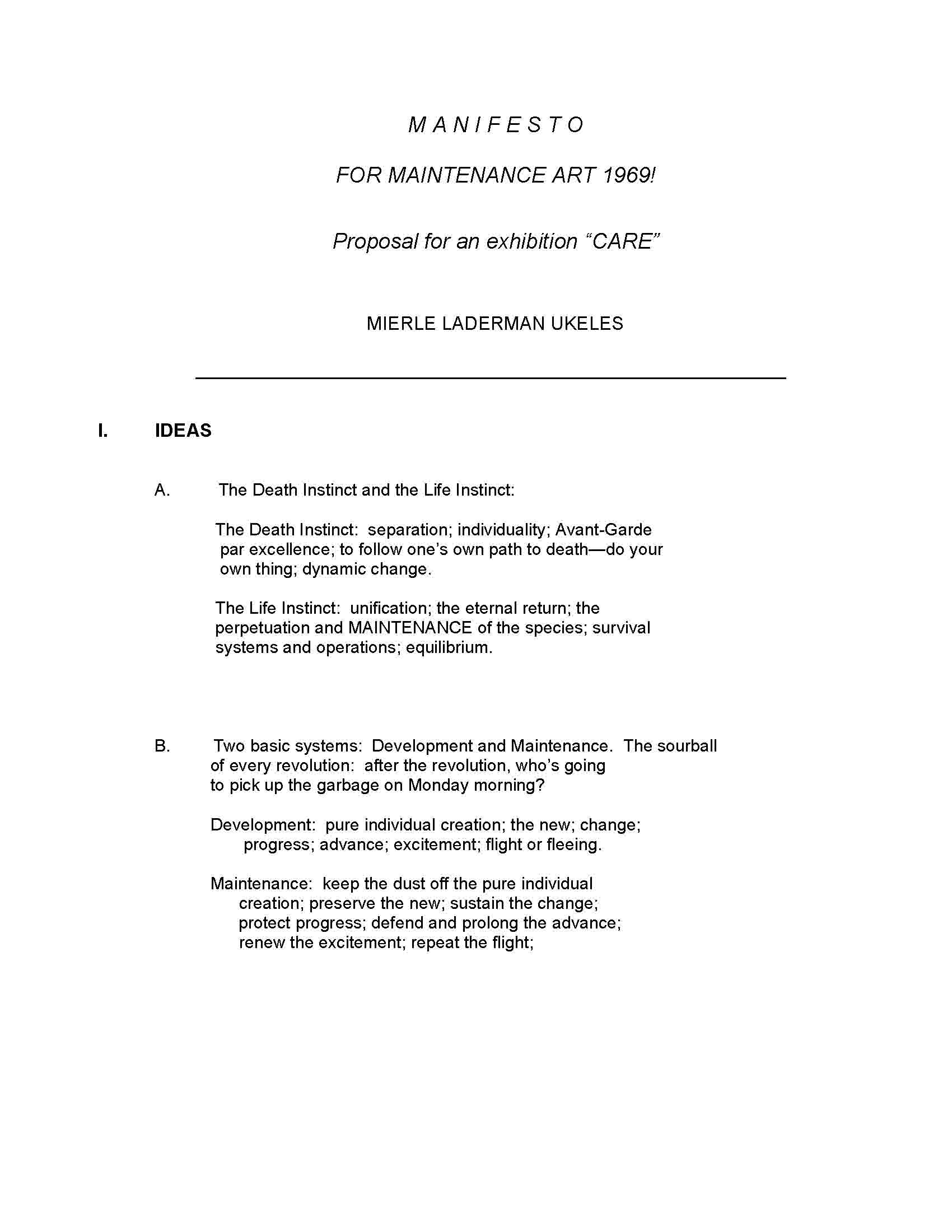
On September 22, 2014 Mierle Laderman Ukeles (1939, Denver, USA) was invited to give a talk as part of the Public Program of Manifesta 10.
Her 1969 Manifesto, Maintenance Art –which questioned the domestic role of female artists and in which Laderman Ukeles defined herself as a “maintenance artist”– also includes the statement “I do maintanence art 1 hour per day”.
On September 25, this artist’s statement, printed on A4 sheets, was hanged on the walls of the Winter Palace’s corridors, staircases, toilets etc. Through the reappropriation and reenactment processes, this intervention shed new light on the original statement; however, within the context of Manifesta 10, it aimed to be a metaphor of the work of the art professional as a domestic worker: is she/he supposed to ‘maintain’ art or to challenge its limitations? It pointed out the relationship between freedom and every-day job, and the effects of our work in the public realm.
To present my intervention I decided to wear a dress by artist Natalia Pershina aka Gluklya (The dress of the woman who became more then she is, 2014). Together with Nikolay Oleinikov, Tsaplya Olga Egorova, and Dimitry Vilensky, Gluklya is part of Chto Delat collective, who decided withdrawing from Manifesta 10 on March 15, 2014.
Valentina Sansone
Babushka
Old women, old woman,
surrounded by art that they
do not want to see.
Old women, old woman,
protecting the new pieces that
should not be.
The world looks on as the artists put in.
The world shouts when the politicians take out.
This in and out and in and out
dismays the old women, old woman
−my old woman
who carries out orders, shielding the young
from the pink, radiant flesh of
cherubs. Censoring children
from the teats of their own mothers:
Madonna and Venus weep,
hiding their embrace,
shunned,
while Jupiter and David
look on, ashamed.
For the old women, old woman,
sitting and watching,
their toothless grin,
reappearing only when
the new is out,
the old back in
by Yen Ooi
commissioned by KTK
Proposal for the basements of the Winter Palace – St. Petersburg
The project proposed moves from the role that the basements of public and private buildings can have in the contemporary delicate Russia’s specific context as places for the spread of counterculture values and actions in relation to the mainstream authoritarian national power.
Everything started when I visited the basement of a club in Saint Petersburg, where for the first time since days I have been able to feel real and honest engagement, passion, art, love, criticism and liberation.
The basement thus acquired to me the aura of a utopian hidden place where to spread countercultural ideas and alternative ways of living and thinking in a close relation between art and life itself.
Both the works proposed for the basement of the Winter Palace building – actually closed and forbidden to the Manifesta 10 workers as well as to the public -, although with different strategies, call into question the institutional power and authority reflecting on the role of community and sharing in the construction of an alternative system of values, where art plays a central role.
Mark Boulos – No Permanent Address (2010)
“The characters in my films wrest their agency from the structures that would control them, including language, reason, gender, God, capital, and the state. Their action is also performance: they rebel against the small roles society has cast for them, they re-imagine who they are, then they perform their greater selves. Thus my work oscillates between fiction and non-fiction, or between mythology and history”. Mark Boulos
For No Permanent Address, Boulos spent eight weeks living in the Philippine jungle with two guerilla squads of the New People’s Army (NPA), a Communist insurgency currently designated as a terrorist organisation by the EU and USA. The resulting work ruminates on the persistence of Marxism beyond the Communism supposed death, focussing on the powerful personal narratives of the soldiers and emphasizing an aspect of love. The film’s title intentionally mirrors the initials of its subject whilst referencing the necessarily peripatetic existences of the NPA, who abandon any fixed address and notions of home in order to avoid capture and death at the hands of the Philippine army. Members follow the theories of Marxism-Leninism-Maoism and willingly relinquish their personal desires and property, devoting themselves entirely to the Party and embracing an ascetic lifestyle.
Rather than depicting military skirmishes with the Philippine army, Boulos gives us a more subtle, distinctly human portrait of the NPA, interspersing shots of the army trekking through densely vegetated coconut groves and undergoing weapons training, with emotionally evocative stories of love, family and sacrifice from individual members of the army. One soldier describes being forced to watch the murder of his family, giving rise to his joining of the NPA. Another discusses the importance of holding your allegiance to the party above personal relationships and ensuring that, ideally, any relationships formed outside of the party bring more civilians into the revolutionary fold.
Presented in the basement of the Hermitage as a metaphorical place for hidden but fervent countercultural happenings in the contemporary controversial Russian context, this video work represents an alternative possible condition experienced by contemporary Marxist revolutionaries from Philippine, in the attempt to reframe the historical revolutionary past that characterized Russia in the early 1900s (1917 – 1924, until the dramatic turn established within the Stalinist age).
Curandi Katz – The Pacifist Library (2013)
Valentina Curandi and Nathaniel Katz are an Italian and American collaborative artist duo.
They have been working together since 2008, enacting momentary utopian gestures that emphasize a relational ethic, that focus on the warmth of relationships between individuals in community and in relation to institutions.
In this context, the duo Curandi Katz would present a printed and bound version of twenty-eight translations of the book From Dictatorship to Democracy (1993) by the American intellectual and philosopher Gene Sharp and create a platform for the sharing and the transmission of the written culture. From Dictatorship to Democracy, A Conceptual Framework for Liberation is a book-length essay on the generic problem of how to destroy a dictatorship and to prevent the rise of a new one. From Dictatorship to Democracy has been circulated worldwide and cited repeatedly as influencing movements such as the Arab Spring in 2011.
It was this idea of subverting the role of an institution through the act of smuggling that led Curandi Katz to open a do-it-yourself editorial station in a museum venue.
The audience is invited to retrieve material from the archive of the museum or from itself on the condition that they photocopy it (and subsequently bind it) directly onto the blank verso pages of the printouts of Sharp’s From Democracy to Dictatorship. By this practice, the participating public can make a “customized” version of the book which was inspiring for the artists’ practice while contributing at the same time to the spread of written knowledge in a subverted and unconventional way of the written culture’s transmission, also transforming the space of the basement in a reading-room where to share and spread alternative and unconventional issues and topics.
Chiara Nuzzi

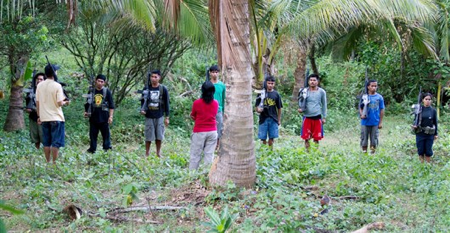
Mark Boulos, No Permanent Address (2010), video still
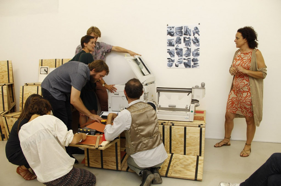

Curandi Katz – The Pacifist Library (2013), installation views
THE KOLYVAN VASE

In the room which hold the world’s largest vase on the ground floor of the Winter Palace there will be a wall based work plus a re-appropriation some of the existing works in the room.
The ‘Great Vase’ is the largest Kolyvan vase in the world. Kolyvan is a rural region of mid-southern Russia notable for both its natural beauty and its stone resources such as the marble from which the vase is made. Kolyvan’s most significant industry was, during a vast amount of years, serving the appetite for this material of the Imperialistic powers in St Petersburg and Moscow.
Upon hearing about the ‘world’s largest vase’ I asked myself, what is the point in the world’s largest vase? What is the value in a vase being any larger than any other utilitarian or even decorative vase? It seems absurd.
It took two whole years for workers in the rural Kolyvan area of Altai Krai to cut this single slab of jasper from the rock, a thousand men to haul it to the Kolyvan lapidary factory, and another twelve years to produce the finished article. Its worth pointing out the challenge and extreme level of skill required to work with this particular type of material, where in which lies the material’s appeal to the imperial culture– it is fragile to work with and extremely difficult to create the thinner parts of the vase without breaking it. Perhaps there is some poetic symbolism there. The rest of its journey, (including the walls knocked down in the Hermitage to accommodate it in 1843), you can only imagine…
I think of the size of the task and the futility of the enterprise together with the exaggeration of the object’s scale and ornamentation this offers a surreal aesthetic I think. I can imagine it in the background of say, a De Chirico painting (pre-surrealist I know but you get the idea).

Jeremy Deller, We Sit Starving Amidst our Gold, 2013
The facile nature of a ‘bigger is better’ cultural attitude of imperialism around the world and throughout history is reflected in a contemporary subculture of modern Russian oligarchs such as Roman Abramovic, with regards to boats. Fully grown men who feel that the size of his boat is a sign of phallic victory perhaps?..
We Sit Starving Amidst our Gold by Jeremy Deller will be painted across one of the walls, as a back-drop to the vase, unusually and notably small compared to previous incarnations of the piece. The piece has to defiantly deal with the lack of wall space and work around the windows and elaborated doorways to make its statement. If you’re unfamiliar with the mural it depicts a giant-sized William Morris, the English textile designer, poet, novelist, translator, and socialist activist stood knee-high in the Venetian lagoon, throwing Roman Abramovic’s private cruise ship in to the water with force, plunging it to destruction.

Placed somewhat strategically is an immersive installation of the room’s smallest existing Roman 2nd Century busts. Taken from their plinths they occupy the predominantly black and white floor tiles like chess pieces, only exaggerated chess pieces and again, surreal in their appropriated positioning. Collectively they pay homage to Garry Kasparov, widely regarded as the greatest Chess player in history. Well-known as one of Russia’s greatest minds through his unprecedented chess career, he famously challenged a computer named Deep Blue. This wasn’t the only time he was to challenge a machine. Garry later embarked on politics.
Garry founded the United Civil Front, a movement under the ‘umbrella’ opposition coalition The Other Russia. A great player of a famous Russian pastime, Garry was outspoken in his new vocation, as is in the job description of a politician, and was publicly said by a former KGB general to have had his life in danger or ‘trouble’ due to his anti-Putin stance of preserve electoral democracy in Russia. On 14 April 2007, he was briefly arrested by the Moscow police while heading for a demonstration and was once struck over the head with a chess board while attending a promotional event. On 17 August 2012 Kasparov was arrested and beaten outside of the Moscow court while attending the verdict reading in the case involving Pussy Riot. On 24 August he was cleared of charges that he took part in an unauthorized protest against the conviction of three members of Pussy Riot. Relating to the Creman situation Kasparov’s website was also blocked by the Russian Federation regulators
So the installation acts as a kind of monument to Garry Kasparov and his political plights following his chess career and the cause of Pussy Riot.
Sam Perry
THE IMPORTANCE OF BEING CONTEXT

Grayson Perry, Over the Rainbow, 2001
Hermitage has more than 2.5 million visitors per year, the number of visitors that the museum can admit, despite the abundance of rooms, is limited and if the number of them increased greatly, then overcrowding would be inevitable. Hermitage has of course changed in all these years, but it has mostly preserved itself. The name “Hermitage” means a place inhabited by a hermit, a place of solitude and peace, the museum tries to be just this so that a person can come off the street and find peace and tranquillity, and can get away from the bustle of the street. The goal of the Hermitage is still the same, to heal the soul, teach good taste, an understanding of history and a feeling for real things. This becomes more important with time, because the museum is one of the few keepers of reality, as opposed to the television and internet: things talk to people, without middlemen. Originals are becoming more valuable in an era of clones and virtuality and the authenticity of the cultural masterpieces remains an eternal value in our fast moving world. Every work of art has the same importance in the collection and each one is treated as a masterpiece, the public can choose how spend his time inside the museum and how much time dedicate to each single oeuvre, object or archeological evidence, but the collection is so large that is impossible to look at everything in a single day. These impossibility to catch the Hermitage in its entirety open up to the possibility to insert infinite numbers of work inside the exhibited collection. These can be an occasion to attempt an interaction with the mass of visitors, to catch their gaze and attention on the different objects, to try to insert contemporary artworks inside the ancient masterpiece collection using the rule of “invisibility” as central idea. These operation of shifting the context leads to enrollment of new values inside the contemporary artworks.
“why do you need to put sex, violence or politics or some kind of social commentary into my work?’ Without it, it would be pottery. I think that crude melding of those two parts is what makes my work.” Grayson Perry
Valeria Mancinelli
Öyvind and the Egyptians

Öyvind Falhström, The Little General (Pinball Machine), 1967-68. Oil on photopaper on vinyl, plexiglas, metal, magnets, styrofoam floats with lead keels in a pool. 100 x 280 x 550 cm (pool) Presented in room 100 (ancient Egypt room).

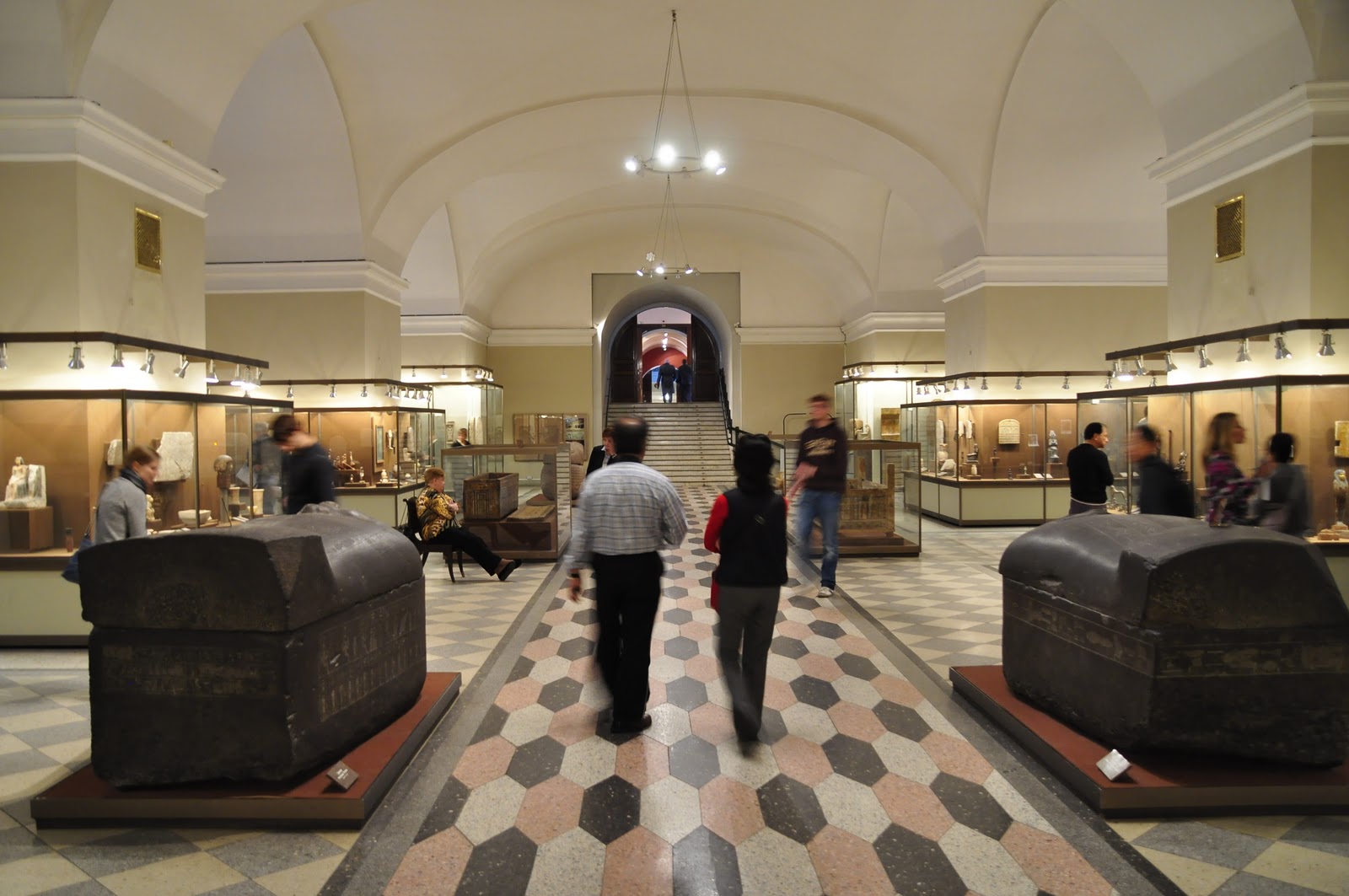
In the work presented, The Little General(Pinball Machine), Öyvind Fahlström examines the world with the model of a game. The floating pictures (of politicians, porn, celebrities and so on) invite the viewer to arrange the conceptual and/or pictorial connections and by this create the viewers own way of reading the work, and as an extension the world. This type of invitation seems more and more rare in todays Russia. As a small pluralistic counterweight to this tendency I choose to present this work inside the walls of the state Hermitage.
Fahlström was a Swedish artist, born 1928 in Sao Paolo, Brazil. In his early youth he travelled to visit relatives in Sweden but was then stuck there due to World War II. He started his career working with concrete poetry (he even wrote a manifest for concrete poetry called Hätila ragulpr på fåtskliaben) and through this entered the field of visual arts. During his lifetime (he died at an age of 48 in 1976 from cancer) he worked with happenings, television, radio, theatre, visual arts and much more (his idea of the ideal work was the opera) and since 1961, when he moved to New York, became an important link between the American and Swedish art community. Even if many see him as a pop artist his works displays a complexity and an interest in organisation principle and gaming theory that connects him more with the conceptualists, even if he never adapted their objective style of presentation. Fahlström is always political, harshly criticising capitalism and imperialism and he was closely connected to the “New Left” during his time in the US. In the late sixties he started to show works with moveable parts called variable paintings, where he worked with magnetic, painted parts that you could move around on the surface. Trough this he´s paintings was constantly re-composed and re-contextualized. After a while his pools started to appear as a development of these variable paintings. In the pools he worked with parts placed in water floating around freely.

One of these pools is the work presented here. In this work you can see his interest in games, even in the title (Pinball Machine). Fahlström connects the artwork with the pinball machine, the game where you are supposed to collect as many points by hitting a small ball around the game plan. In the artwork you are supposed to shift the figures around to achieve the high score. Fahlström himself said in 1968: “I see The Little General (Pinball Machine) as a kind of floating, modified electric billiard game in which these numbered plexiglass tiles placed around the work replace those things that light up and flash and react in different ways when the ball goes into a hole. You have to push the floating shapes or blow on them, in any way you can, really. But because you have these fixed elements with different values, and there are various figures charged with emotional connotations, each person can set up their own relationship to them and create constellations…”[1] The different floating pictures are also sorted in to four different categories, depending on whether they fall into the sphere of power of the United States, Soviet, China or the Third World: blue, red, yellow and brown/green, respectively. In this way, you can´t miss Fahlströms interest and engagement in the politics of his time.
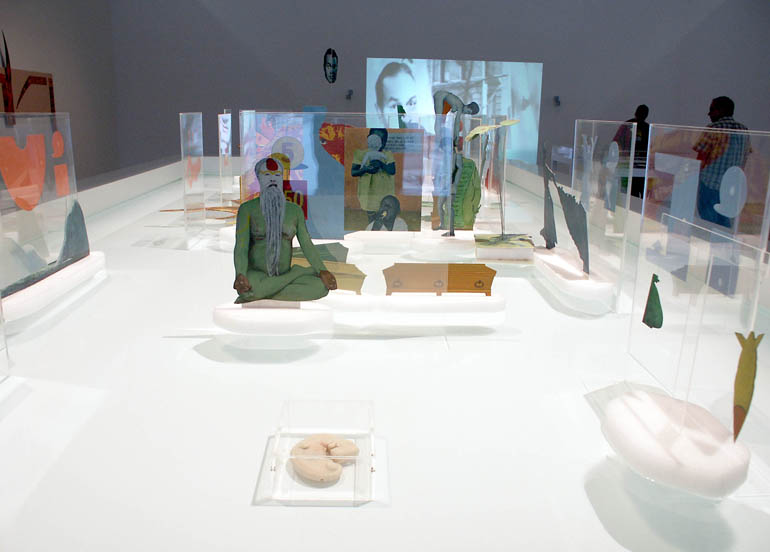
To place The Little General (Pinball Machine) in the ancient Egypt room of the Hermitage has mostly formal reasons. The hieroglyphs of the Egyptians work with an almost template like way of depicting their world and the occasional small wooden figurines presented in the glass vitrines makes Fahlströms simplified pictorial depiction of the world fit right in. The pool also mimics the big glass boxes in where the sarcophagus is displayed.
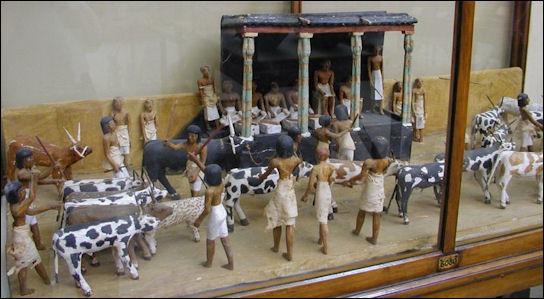
Here Fahlströms depiction of power and politics of the sixties collides with the depiction of power and politics of the Egyptians. For me, this duality between the pop look and the conceptual ideas behind the work, his refusal of splitting the political from the formal, makes it an important and still to this day relevant work to show. His ideas about the world as a game are also applicable to our time and a relevant tool for analysing today’s politics and power struggles.
[1]http://www.macba.cat/en/the-little-general-pinball-machine-2792
Jacob Hurtig
